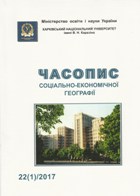Atlas use in teaching geography in higher education in the U.S. and Canada
Abstract
Skills in map use and interpretation are important in geography education. Atlases represent special collections of maps that can be beneficial for developing map use and interpretation and spatial analysis skills in geography students. In this study, we examine the utilization of atlases in geographic coursework. We surveyed 295 geography instructors in theU.S.andCanadaabout their usage of both print and digital atlases in geography courses of different level. The survey generated 54 responses. The findings indicated that about 39 percent of instructors use atlases in instruction, most of those use print atlases rather than digital atlases. It was found that most of the instructors who use atlases in their instruction teach upper-level Human Geography courses. Some other general courses, in which atlases were used are: Introduction to GIS, Remote Sensing, World Regional Geography, and Introduction to Physical Geography. As indicated by the survey responses, atlases are widely used in special topic courses such as World Forests, Geography of North America, Research Methods in Geography, Natural Hazards, Geography of Europe, History and Theory of Geography, Current World Affairs, Geography of Pennsylvania, Political Geography, Geography of Russia, North American House Types, and Geography of Consumption. In addition to analyzing the survey responses, we also provide examples of atlas use in a variety of courses. We conclude that atlases are useful for studies of spatial associations and geographic patterns, as a background information or context resource, as a source that helps to learn geographic locations, and to learn cartographic methods and map design.
Downloads
References
2. Bodzin, A. (2011). The implementation of a geospatial information technology (GIT)-supported land use change curriculum with urban middle school learners to promote spatial thinking. Journal of Research in Science Teaching, 48(3), 281-300.
3. Borchert, J. (1987). Maps, Geography, and Geographers. The Professional Geographer, 39/4, 387-389.
4. Gillen, J., Skryzhevska, L., Henry, M.C., Green, J. (2010). Map Interpretation Instruction in Introductory Textbooks: A Preliminary Investigation. Journal of Geography, 109/5, 181-189.
5. Green, J.E., Burns, D., Green, T. (2008). The Enigmatic Enrolment Trend in US Map-Interpretation Courses. Cartographica, 43/3, 221-226.
6. Green, J., Henry, M., Skryzhevska, Y., Toops, S. (2012). Map Interpretation in Introductory Geography Courses: Syllabi Study. Research in Geographic Education ,14, 42-54.
7. Haggett, P. (1990). The Geographer’s Art. Oxford: Basil Blackwell.
8. Hartshorne, R. (1939). The Nature of Geography. Annals of the Association of American Geographers, 29/3 & 4, 289.
9. Harwood, J. (2006). To the end of the Earth. 100 maps that changed the world. F+W Publications Inc., Cincinnati, OH.
10. Klein, P. (2003). Active Learning Strategies and Assessment in World Geography Classes. Journal of Geography, 102 (4), 146-157.
11. Lee, J., Bednarz, R.S. (2009). Effect of GIS learning on spatial thinking. Journal of Geography in Higher Education, 33 (2), 183-198.
12. Muehrcke, P. (1981). Maps in Geography. Cartpgraphica, 18/2, 1-41.
13. Perkins, C. (2004). Cartography – Cultures of Mapping: Power in Practice. Progress in Human Geography, 28/3, 381-391.
14. Robinson, A.H. (1965). The Potential Contribution of Cartography to Liberal Education, in J.F. Lounsbury, Geog-raphy in Undergraduate Liberal Education. Washington DC, Association of American Geographers, 34-47.
15. Sauer, C. (1956). The Education of a Geographer. Annals of the Association of American Geographers, 46/3.
16. Skryzhevska, Y., Green, J., Abbitt, R. (2013). GIS Text Content as a Basis for Map Interpretation Skill Development. Cartographica, 48/1, 38-46.
17. Songer, L.C. (2010). Using web-based GIS in introductory human geography. Journal of Geography in Higher Education, 34(3), 401-417.
18. Ullman, E.L. (1951). Advances in Mapping Human Phenomena. ONR Report No. 5.
19. Wiegand, P. (1998). Atlases as a Teaching Resource: Findings from a National Survey. Geography: Journal of the Geographical Association, 83, 4.
20. Wiegand, P. (2006). Learning and Teaching with Maps, Routledge.
Copyright (c) 2017 Jerry Green, Liza Skryzhevska, Stanley Toops

This work is licensed under a Creative Commons Attribution 4.0 International License.




